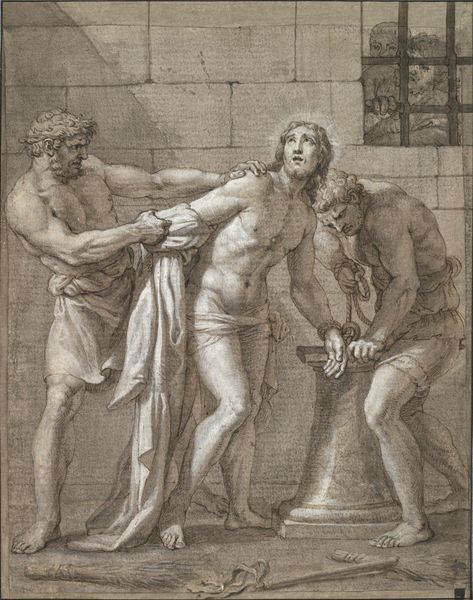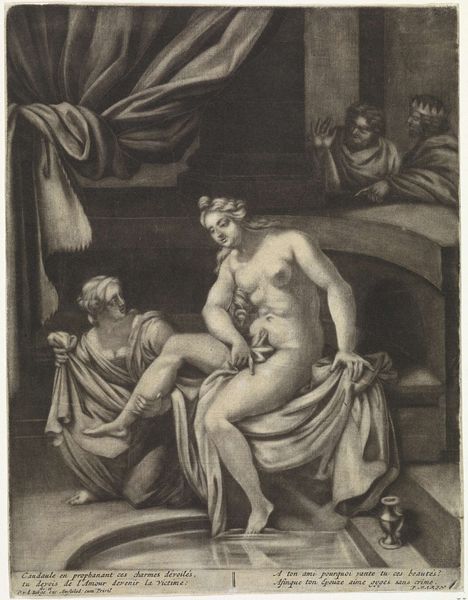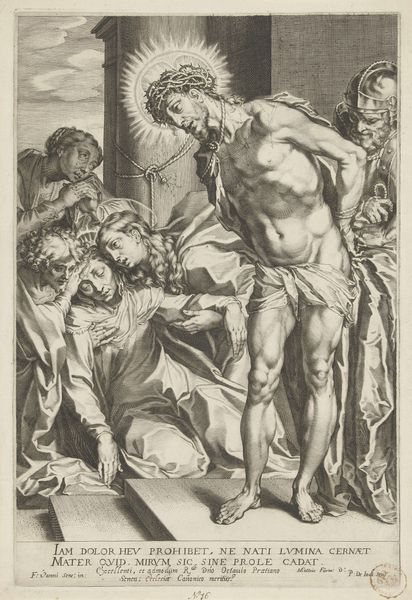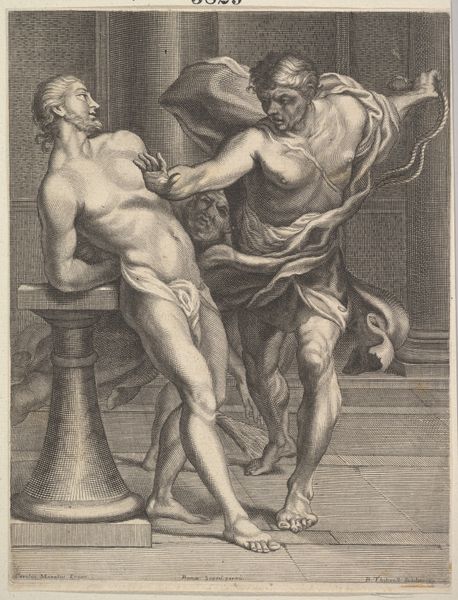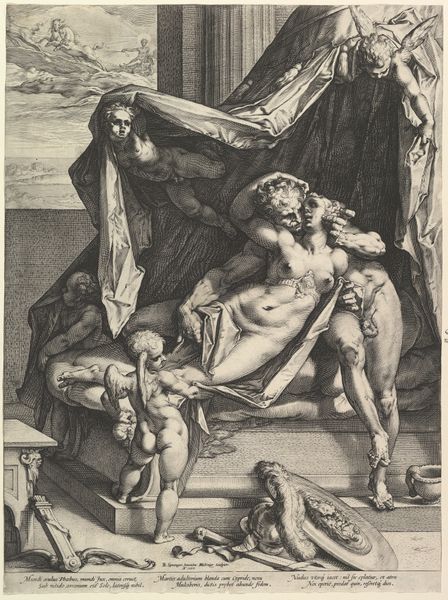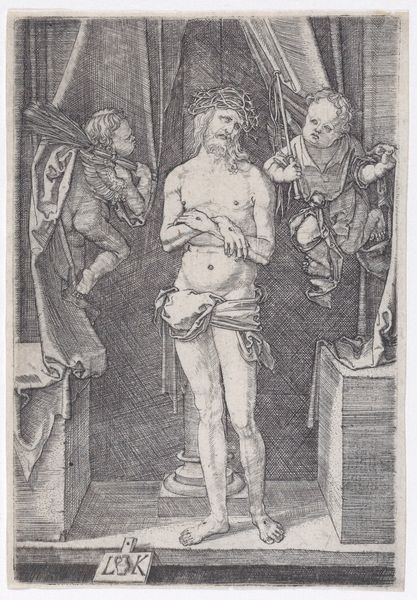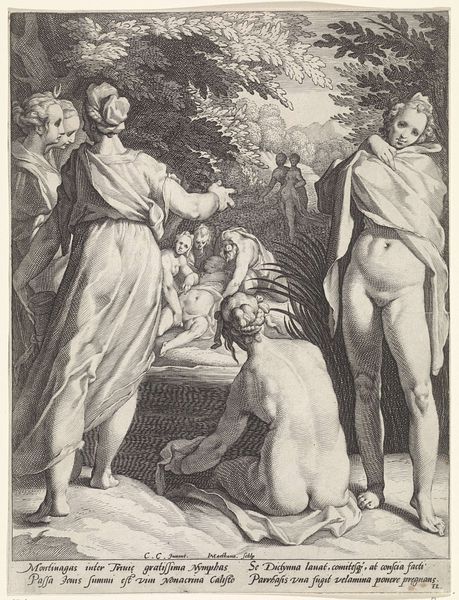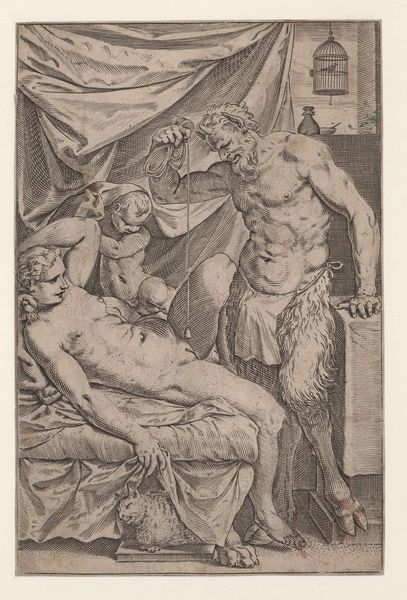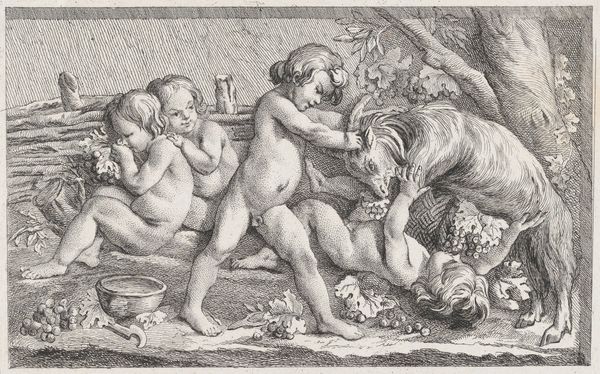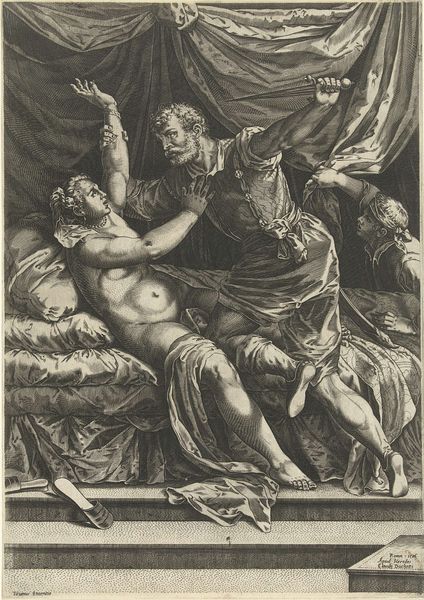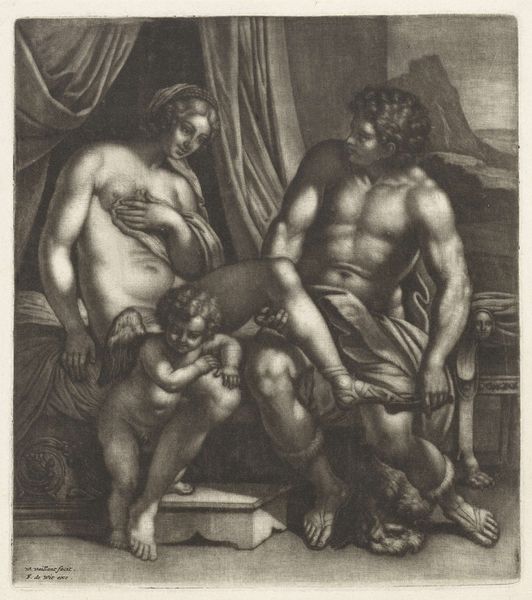
painting, oil-paint
#
portrait
#
allegory
#
painting
#
oil-paint
#
mannerism
#
oil painting
#
neo expressionist
#
underpainting
#
history-painting
#
nude
#
portrait art
Copyright: Public domain
Editor: We’re looking at “Sarah Presenting Hagar to Abraham,” an oil painting by Bartholomeus Spranger. I am immediately struck by how much of the figures' bodies are revealed. What cultural ideas about beauty or the role of women in society do you think the artist was trying to represent here? Curator: That's a fantastic starting point. Let’s consider the Mannerist style and its popularity amongst elite circles during the period, say the late 16th Century. Spranger and other artists created work not necessarily to reflect societal norms, but to participate in courtly politics. How would depicting this biblical scene in such an erotic way reflect such political aspirations? Editor: Perhaps making these Biblical characters "sexy" gives them importance or reflects a heightened value for sensuality within royal court. Curator: Precisely! This wasn't just about portraying a biblical scene; it was about constructing a vision of power, beauty, and, dare I say, even a particular idea of dynasty and inheritance for Spranger's patrons. Do you see how Sarah’s gaze differs from that of Hagar, reflecting the dynamics of power, control, and, perhaps, even exploitation of the less powerful? Editor: It seems to show the powerful at the time used these ideas for their own political advantages. Thanks. This certainly shows how the seemingly innocuous or "artistic" is deeply embedded in social hierarchies. Curator: Exactly! The history of art and how we exhibit this work reveals it to be so much more than skin-deep. I also learned a new way to view this historical moment. Thank you.
Comments
No comments
Be the first to comment and join the conversation on the ultimate creative platform.
